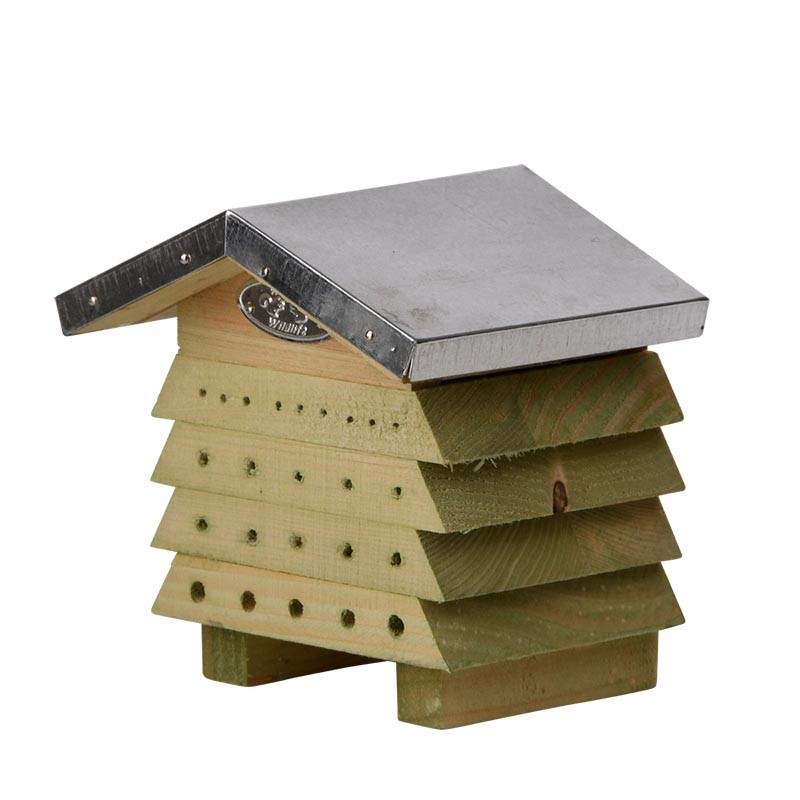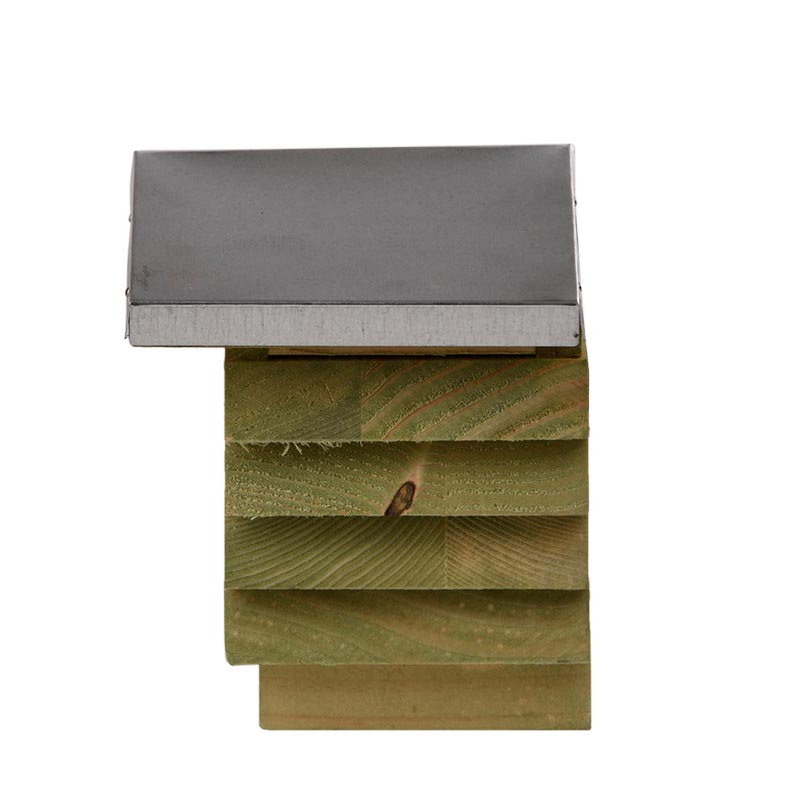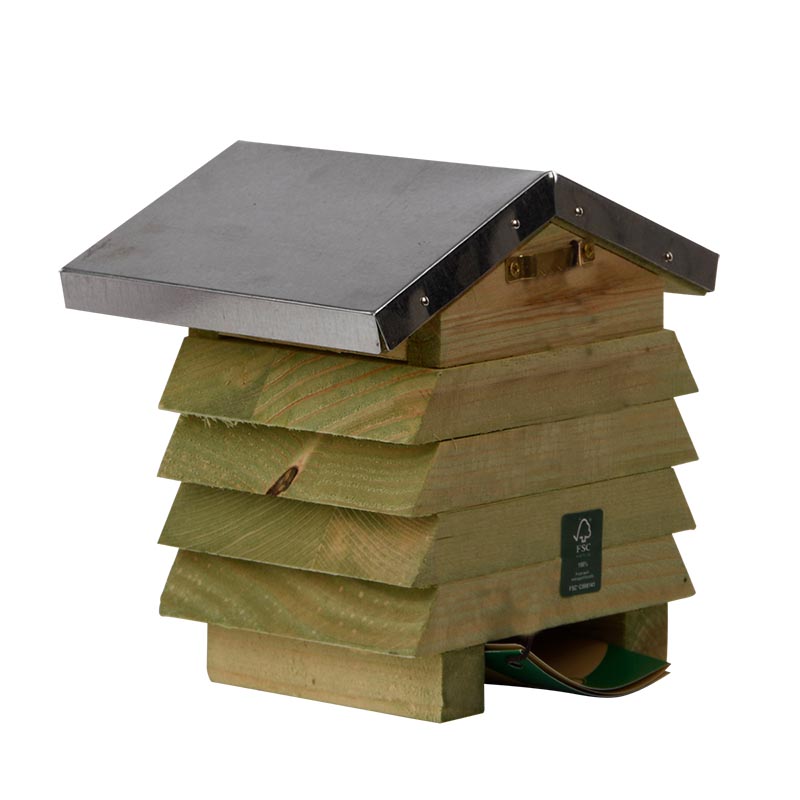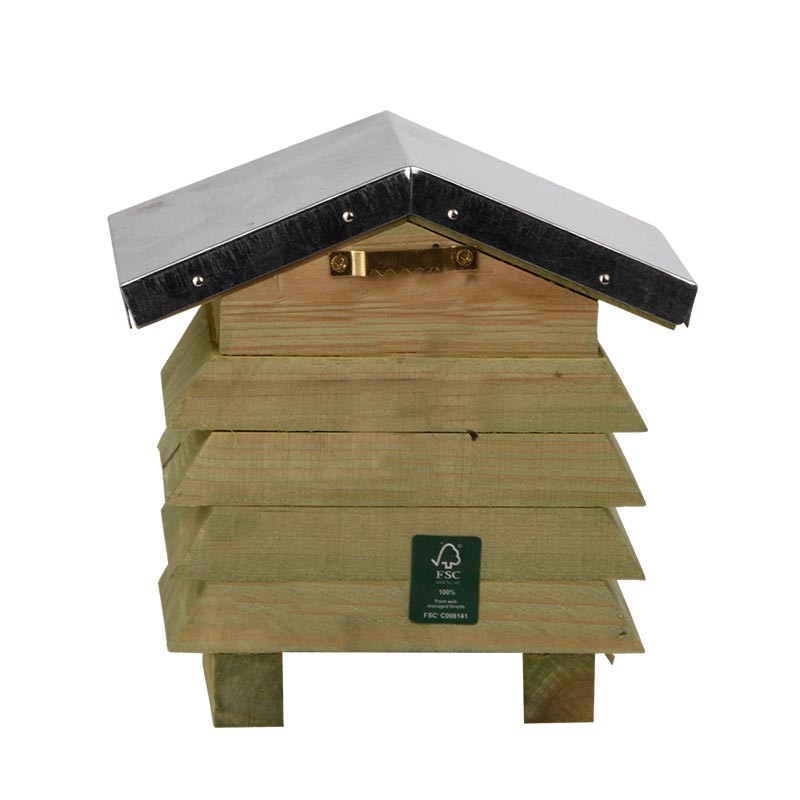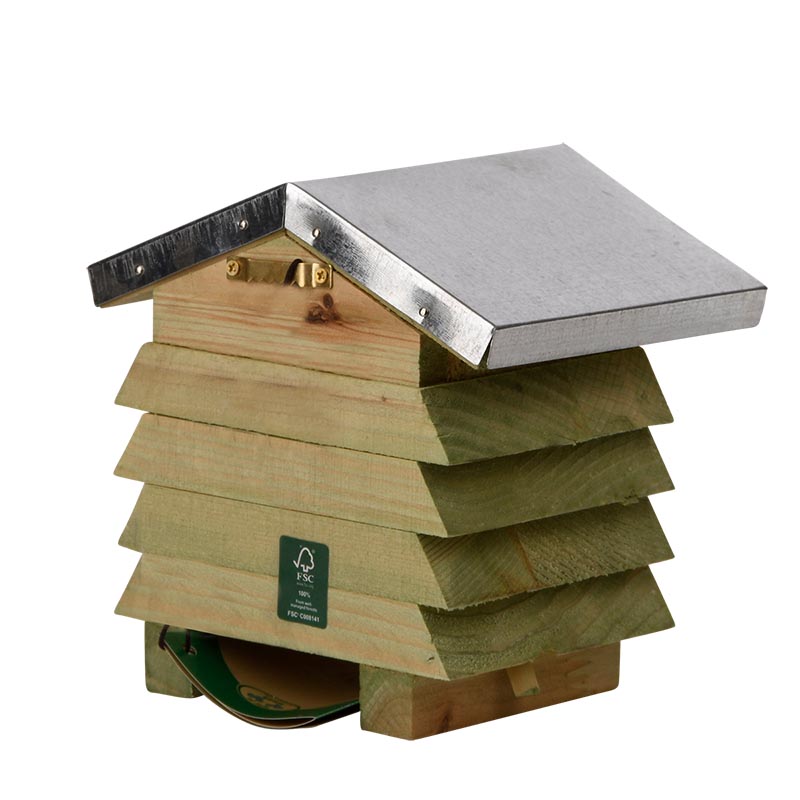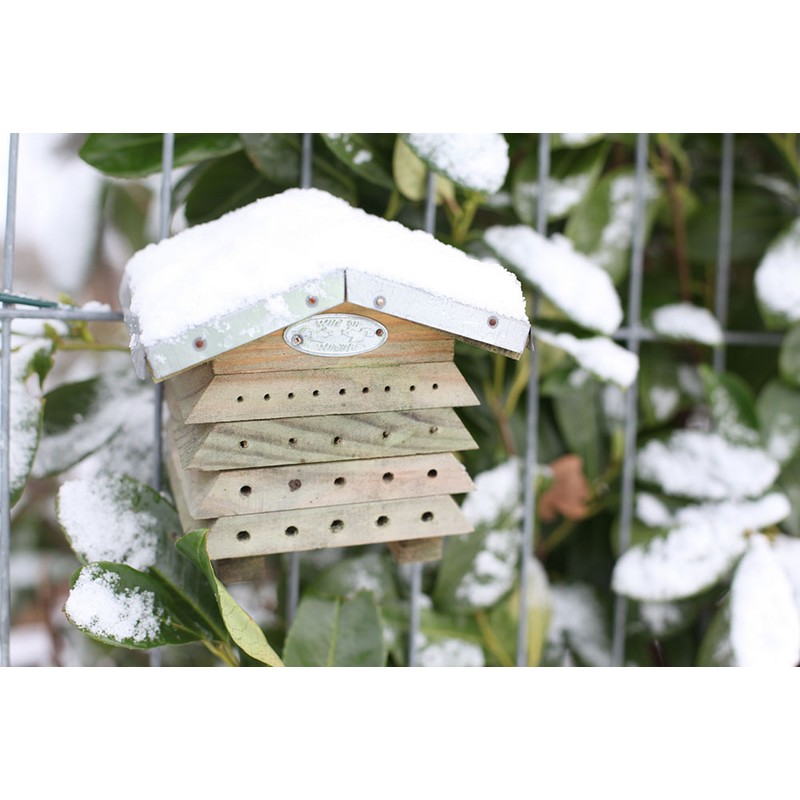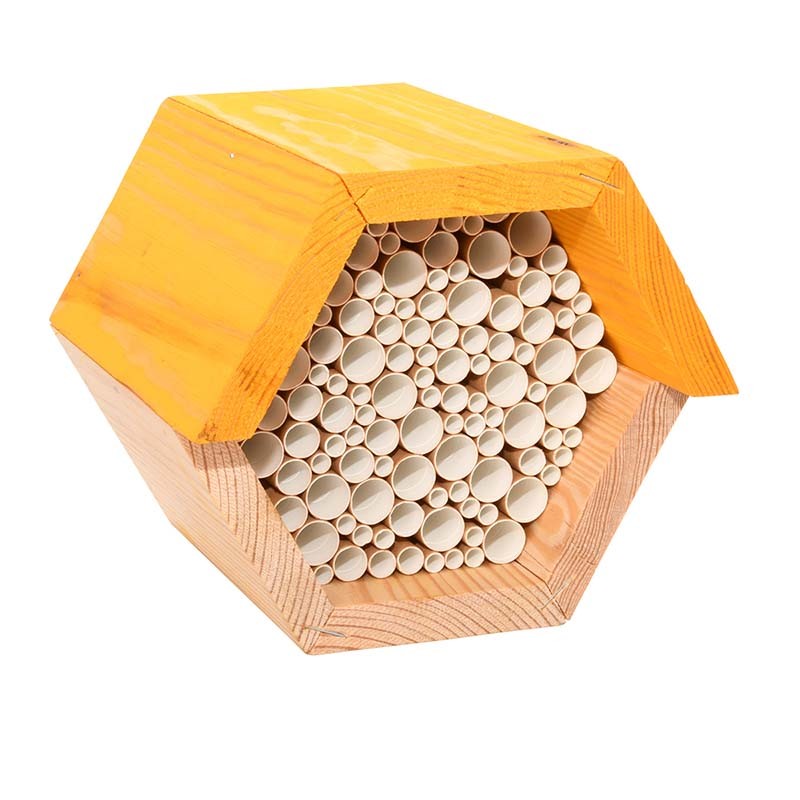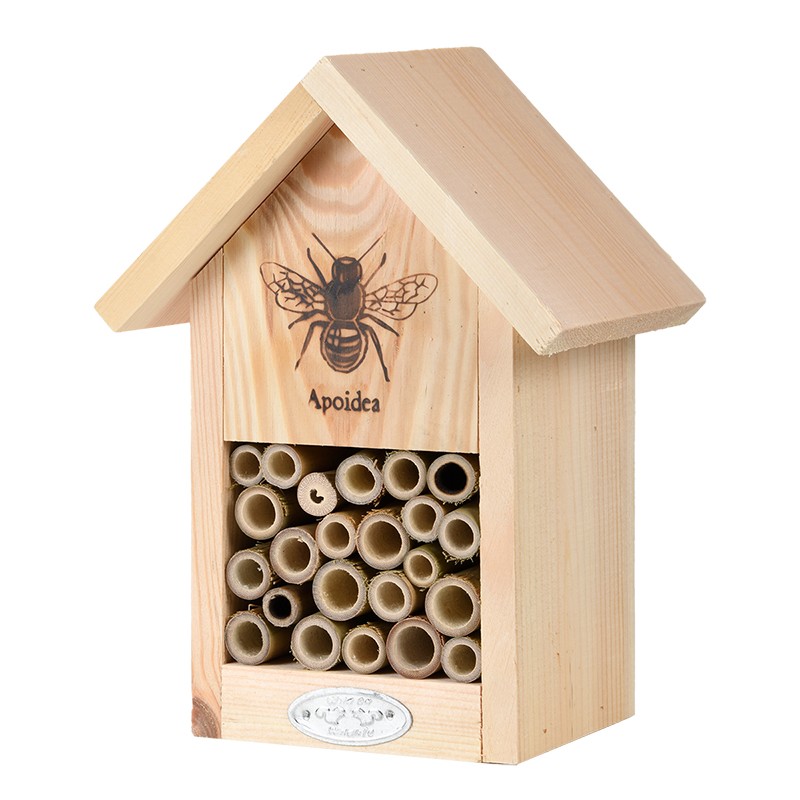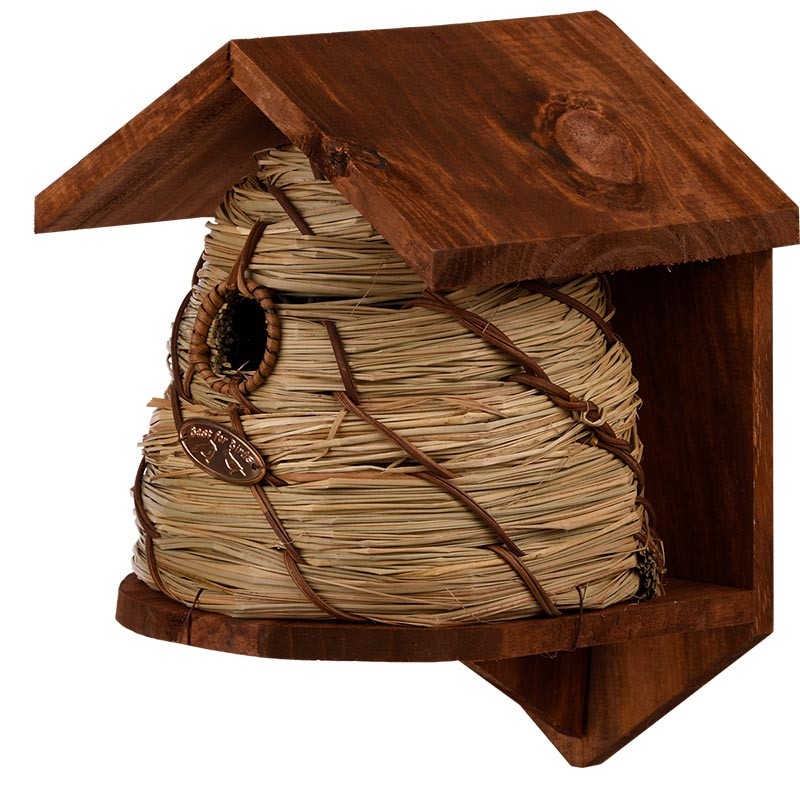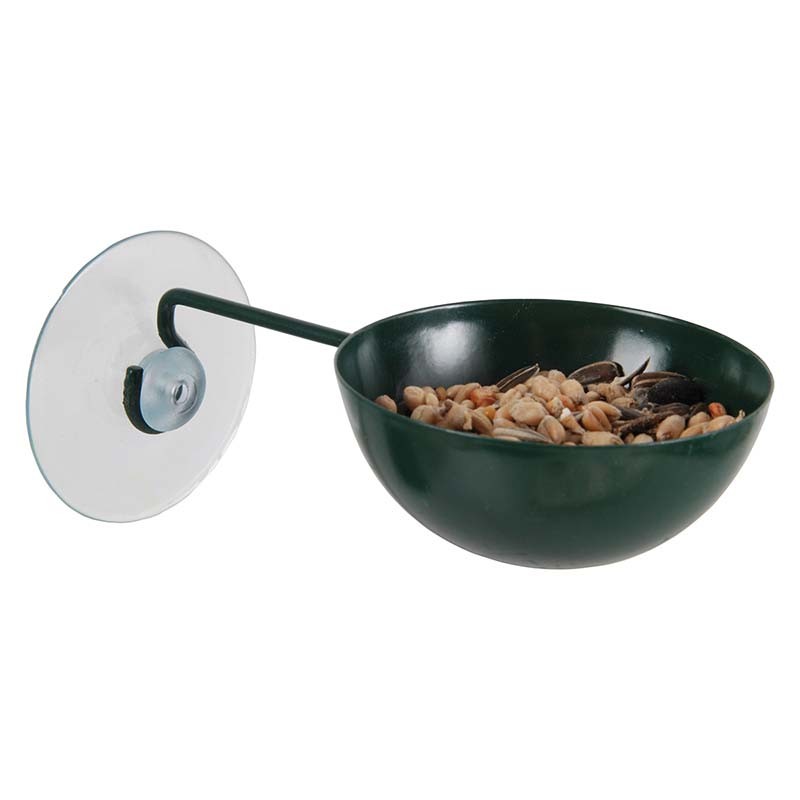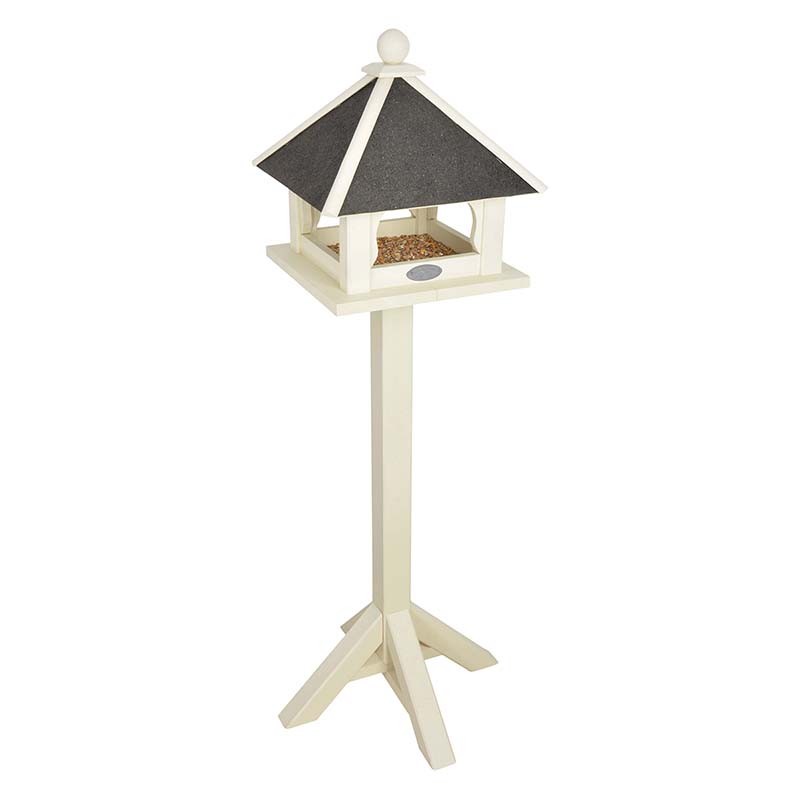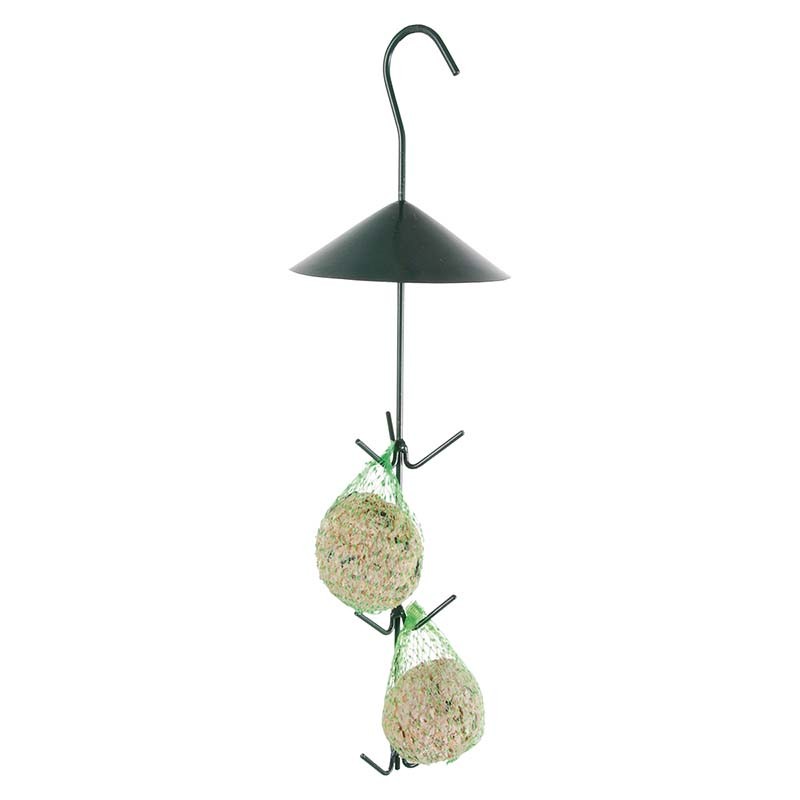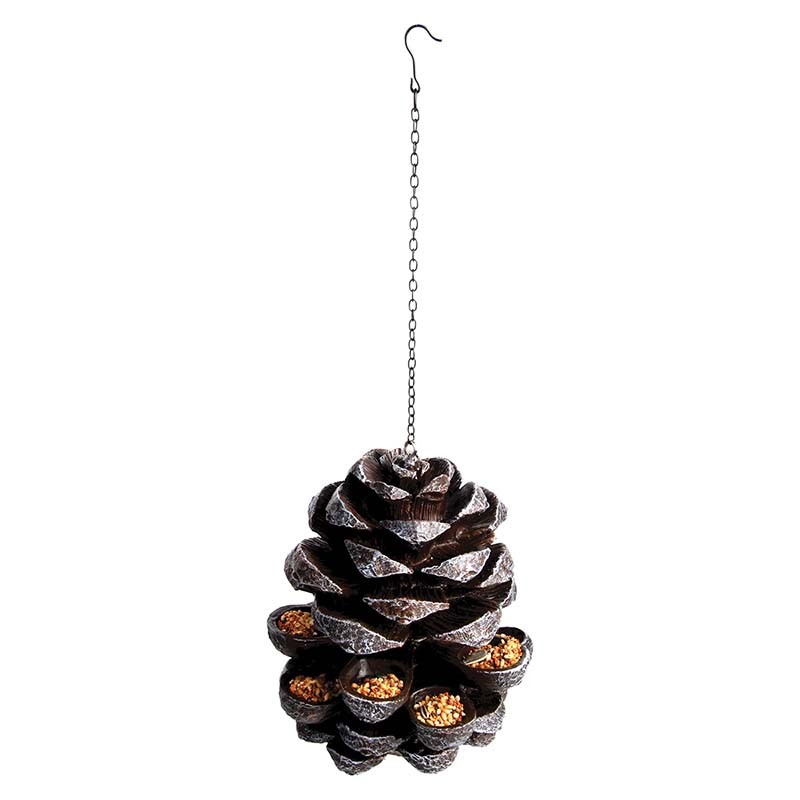Description
Beehouse: Each bee prefers a different diameter. Masonry bees for example, will choose the holes with a diameter of 3 to 7mm (0.12 to 0.47) while Hylaeus will occupy the ones with a diameter of 2 to 4 mm (0.08 to 0.16). A female bee creates cells in a deep narrow wooden hole with a supply of pollen and nectar and for the larvae. Wild bees seal their tubes with loam. There are several things to consider when choosing a location for the beehouse. Choose a sunny location with protection from wind and rain. Warmth is important for the offspring. Attach the insect hotel at a height of 1,5 to 2m (4,92 to 6,56), facing south. Make sure the entrances on the front side can be easily seen by the insects. Native plants, herbs, blossoming flowers, shrubs and trees nearby will ensure a fully booked beehouse. They will provide the food for the insects. Loam, sand and water should also be nearby. Europe is home to hundreds of other bee species. These bees help to fertilise plants and flowers in your garden, and will very rarely sting. With this beehouse you can offer several bees at the same time the opportunity to nest and hibernate.

